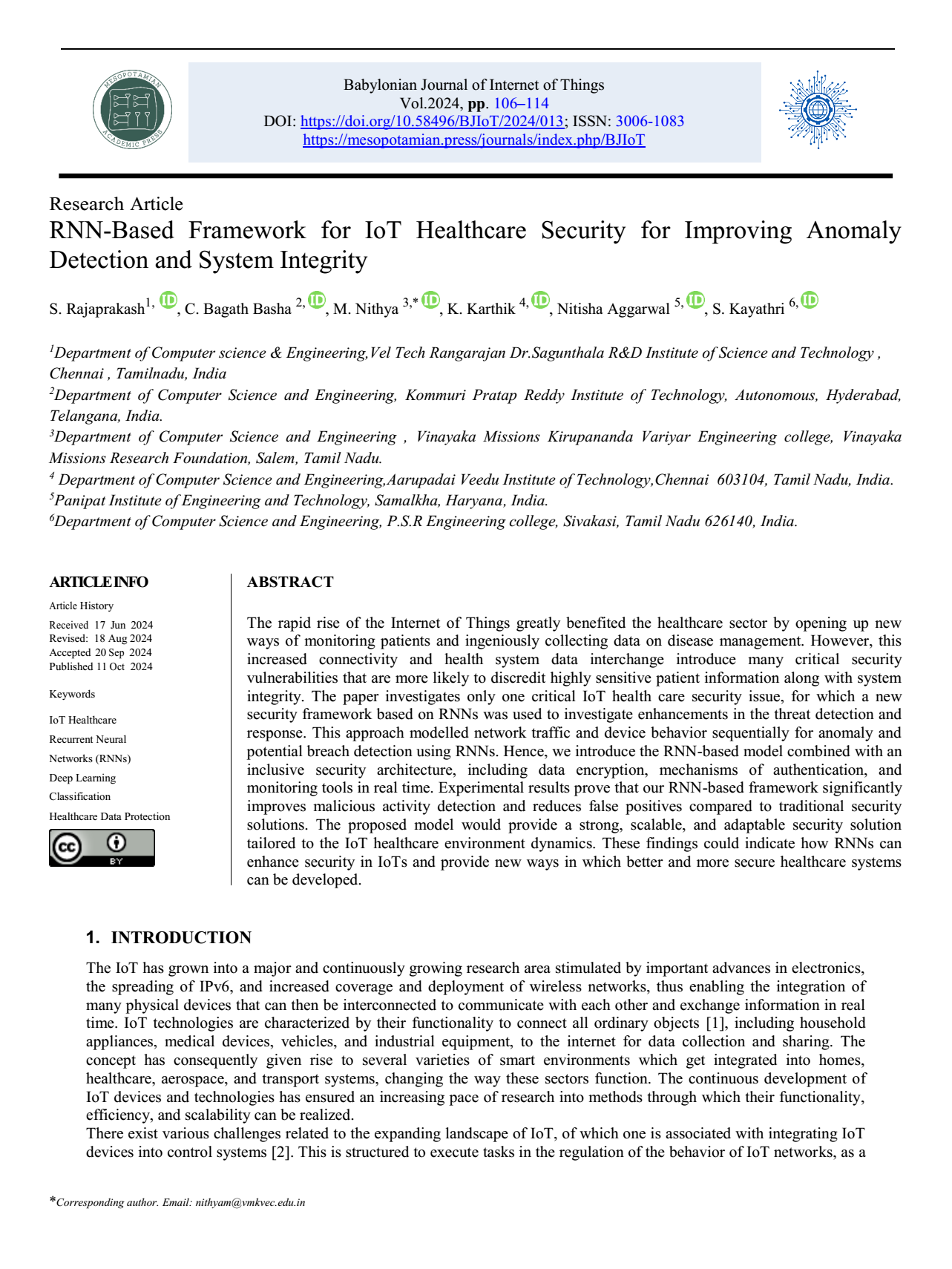RNN-Based Framework for IoT Healthcare Security for Improving Anomaly Detection and System Integrity
Main Article Content
Abstract
The rapid rise of the Internet of Things greatly benefited the healthcare sector by opening up new ways of monitoring patients and ingeniously collecting data on disease management. However, this increased connectivity and health system data interchange introduce many critical security vulnerabilities that are more likely to discredit highly sensitive patient information along with system integrity. The paper investigates only one critical IoT health care security issue, for which a new security framework based on RNNs was used to investigate enhancements in the threat detection and response. This approach modelled network traffic and device behavior sequentially for anomaly and potential breach detection using RNNs. Hence, we introduce the RNN-based model combined with an inclusive security architecture, including data encryption, mechanisms of authentication, and monitoring tools in real time. Experimental results prove that our RNN-based framework significantly improves malicious activity detection and reduces false positives compared to traditional security solutions. The proposed model would provide a strong, scalable, and adaptable security solution tailored to the IoT healthcare environment dynamics. These findings could indicate how RNNs can enhance security in IoTs and provide new ways in which better and more secure healthcare systems can be developed.
Article Details
Issue
Section

This work is licensed under a Creative Commons Attribution 4.0 International License.
